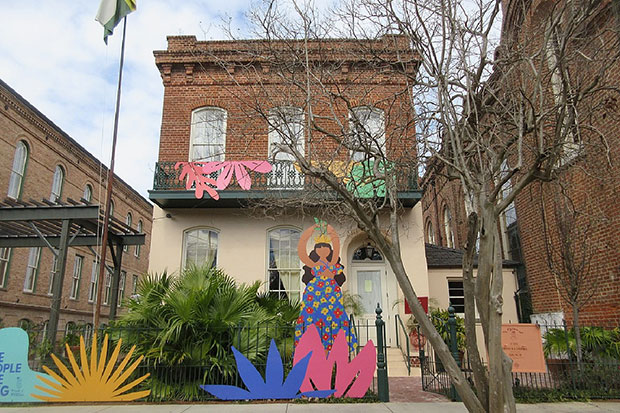Marigny Homes for Sale
Faubourg Marigny boasts an eclectic mix of residents and is peppered with restaurants, historic homes, and iconic music venues.
Faubourg Marigny (or the Marigny) is one of the city’s most diverse and exciting neighborhoods. It’s home to a high concentration of New Orleans’ covetable historic houses, corner bars, trendy restaurants, and world-famous live music venues. It also has a large population of artists and musicians. A viable alternative to the French Quarter, it should also be lauded for the lack of retail chains and walkability.
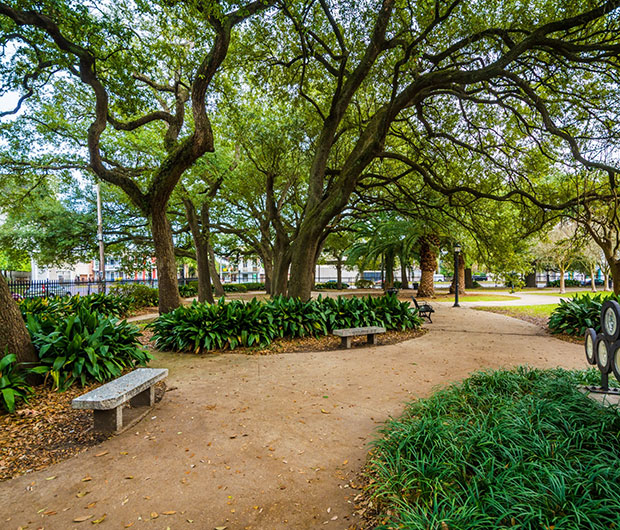
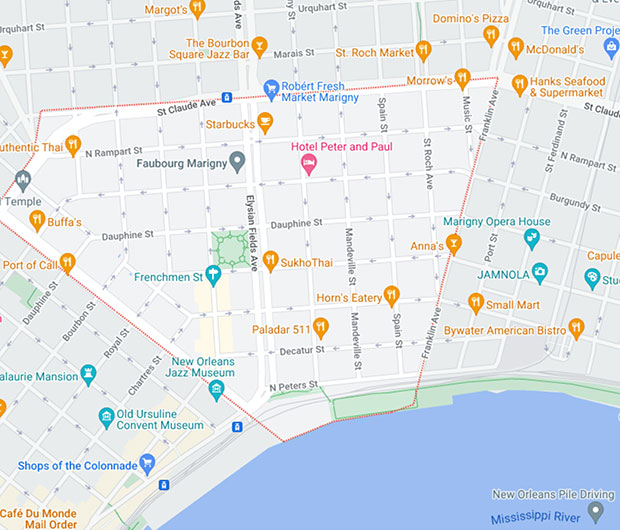
Where Is the Marigny?
The Marigny is part of the Bywater planning district, District 7. According to the U.S. Census Bureau, it’s a total area of 262 acres. The so-called Marigny Triangle (the area between Esplanade and Elysian Fields Avenues) is part of the 7th ward; the rest of the Marigny is in the 8th and the 9th wards of New Orleans.
The New Marigny Historic District contains parts of the 7th and 8th wards plus Faubourg Saint Roch and the upriver part of Faubourg Saint Claude. It was added to the National Register of Historic Places in 1994.
The Marigny’s boundaries, as defined by the New Orleans Historic District Landmarks Commission, are:
North: North Rampart Street and St. Claude Avenue
East: Franklin Street
West: Esplanade Avenue
South: The Mississippi River

Homes for Sale in Marigny, New Orleans
Why Buy a Home in Marigny?
Marigny represents what makes New Orleans a city like no other. It’s packed with excellent restaurants, art galleries, performance spaces, and funky little bars. There are many things to love about the area.
Walkability. The Marigny is adjacent to the French Quarter and easy to get to from Mid-City and other parts of the city, especially with the recent expansion of the Rampart/St. Claude streetcar line. With a score of 93, the Marigny is the third most walkable neighborhood in New Orleans. It’s also considered very bikeable, with a score of 88.
Music Everywhere. You don’t even have to step inside the clubs of Frenchmen Street to hear excellent music — there are brass bands on street corners and music is spilling out of every building. The sprawling indie record store Louisiana Music Factory is also located on Frenchmen Street, as well as the legendary Spotted Cat and d.b.a.
Green Spaces. Check out the lovely swath of green that is Washington Square, on Elysian Fields Avenue by Frenchmen. It has a playground and you’ll frequently find street performers practicing juggling or hula hooping there.
Neighborhood Bars. There are some you wouldn’t want to leave, like the Lost Love Lounge, the Friendly Bar, the 24/7 Buffa’s (with nightly live music and decent bar food), the always-on R Bar, and many more. The bi-level Mimi’s In the Marigny has small plates, pool, and some of the best DJ’d dance parties around. It’s also a prime block-party hangout on Mardi Gras Day.
Dining Galore. Just on Frenchmen alone, some of the most popular nightclubs double as excellent restaurants, like the upscale Marigny Brasserie with its sidewalk seating and people-watching opportunities, the Snug Harbor Jazz Bistro, with its Creole fare served alongside the big acts, and the Three Muses, where the creative small-plates menu complements the nightly jazz shows.
Community Center. A multi-story Healing Center on St. Claude Avenue contains restaurants, a botanica, a food co-op, and more.
Marigny
Attractions
Due to its favorable location, historic significance, and a rich and varied cultural scene, the Marigny is hopping 24/7, without all the cheese and the frenzy of the French Quarter. There’s much to see, do, and eat in the Marigny. Below are a few of our favorite highlights.
The revamped St. Roch Market, one of the last surviving public market buildings in New Orleans, is now a dining destination with a slew of local vendors and food stalls.
Caribbean Flair. The Creole and Greek Revival cottages have been beautifully restored and painted in bright Caribbean colors.
Previously abandoned riverfront warehouses have been refurbished into residential properties, artist studios, and performance spaces.
The neighborhood is home to the prestigious New Orleans Center for Creative Arts (NOCCA) on the riverfront.
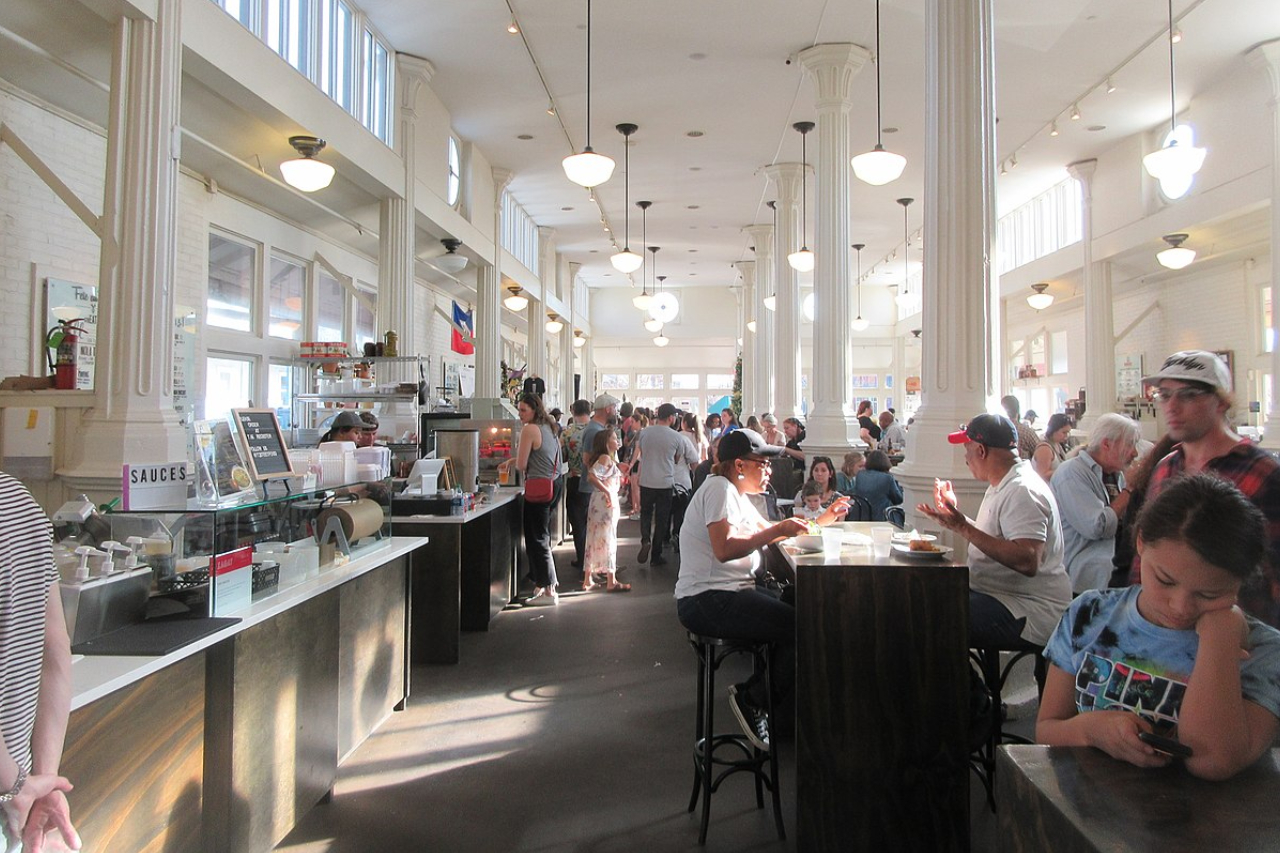
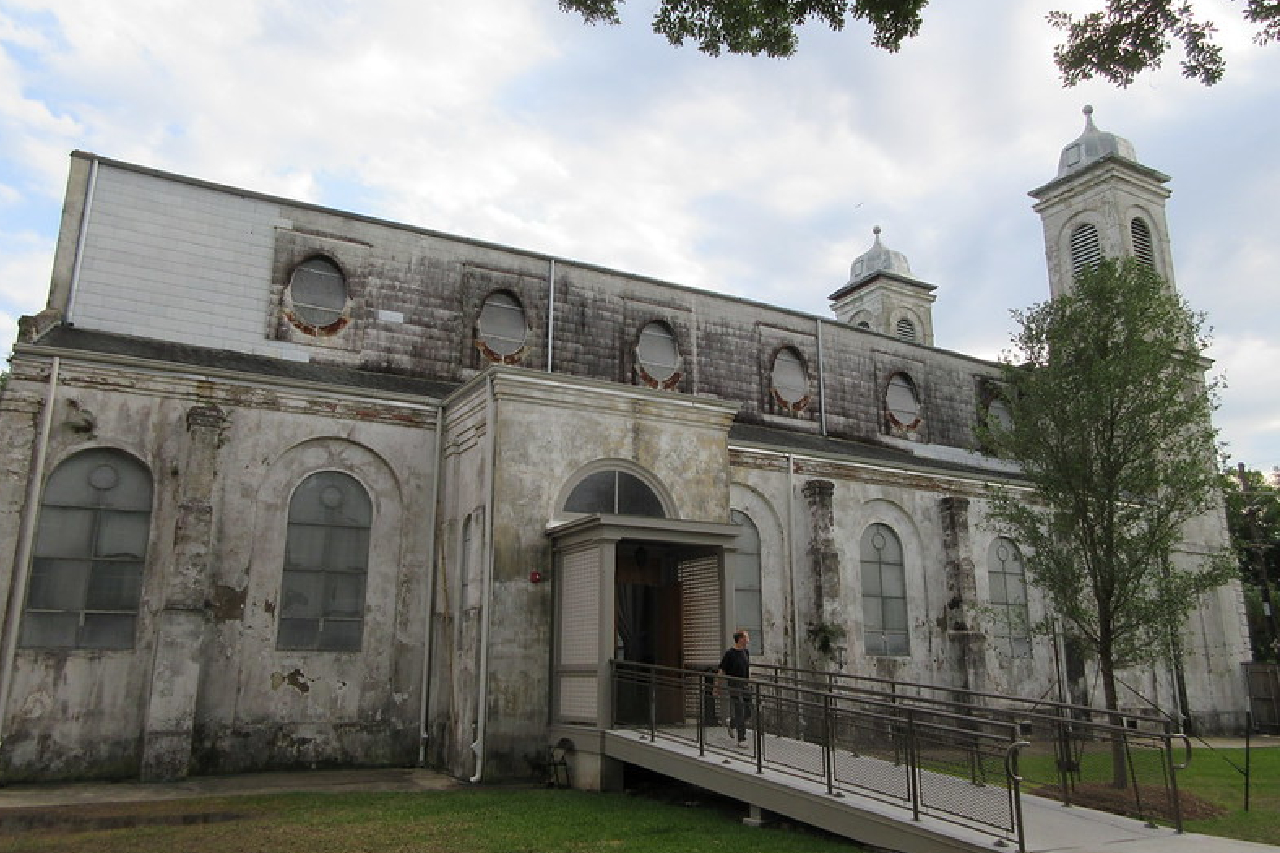
Marigny Opera House on St. Ferdinand Street, in a converted church built in 1853, hosts everything from puppet shows to Sunday musical meditations.
No other neighborhood does Carnival like the Marigny. Just walk the streets on Mardi Gras morning to take in the walking parades and the endless display of old-school, homegrown creativity.
In addition to Frenchmen Street, the St. Claude Avenue strip is packed with bars, clubs, art galleries, and restaurants.

History of Marigny, New Orleans
Marigny is named after landowner Bernard de Marigny, a French aristocrat with well-documented joie de vivre, whose plantation and its subdivisions formed the area in the early 19th century. He sold the lots in small chunks and at affordable prices, spurring the area’s rapid development as one of the city’s oldest suburbs. The process was also helped by the Pontchartrain Railroad running on Elysian Fields Avenue starting in 1831.
Elysian Fields Avenue was the main street of the Faubourg Marigny, stretching for five miles from the riverfront to Lake Pontchartrain. Washington Square on Elysian Fields was designed as the Marigny’s town square.
Like Treme, the neighborhood was inhabited by a vibrant mix of Creoles and free people of color, and later (between 1830s and 1880s) settled by immigrants from Germany, Ireland, and Italy. After a decline in the mid-20th century, where many buildings stood vacant and crime rates soared, the Marigny was destined for a major facelift and a comeback after the 1984 World’s Fair. That’s when the long-term residents of the French Quarter started moving out to escape rising rents and the Quarter’s touristification.
Because the Marigny is located on high ground, it fared well during the flooding of 2005 due to Hurricane Katrina. Despite the rising rents, the Marigny today is still awash in creativity and funky vibes. It’s a premier destination for the arts, live music in particular, as well as its vibrant dining scene.
